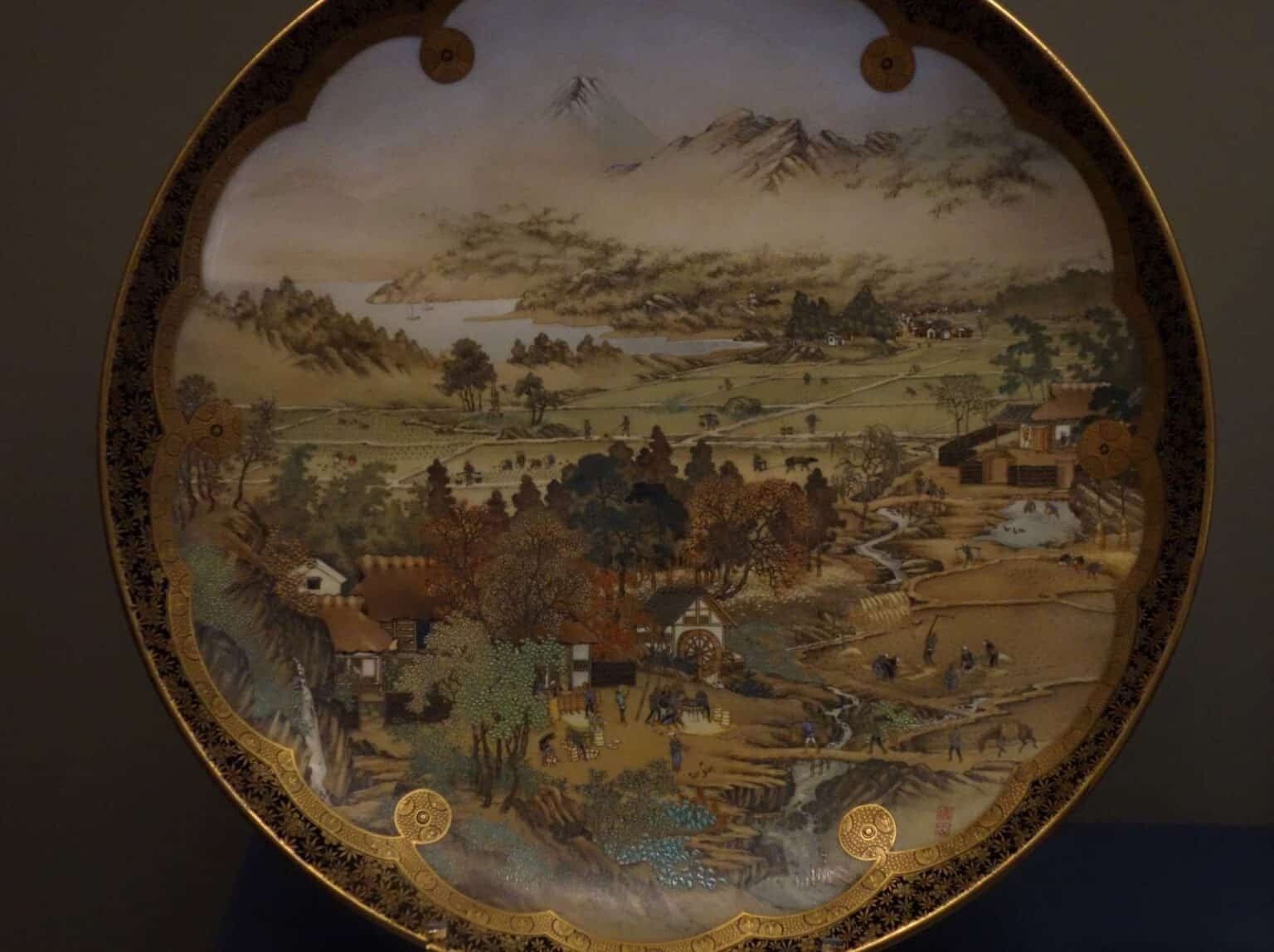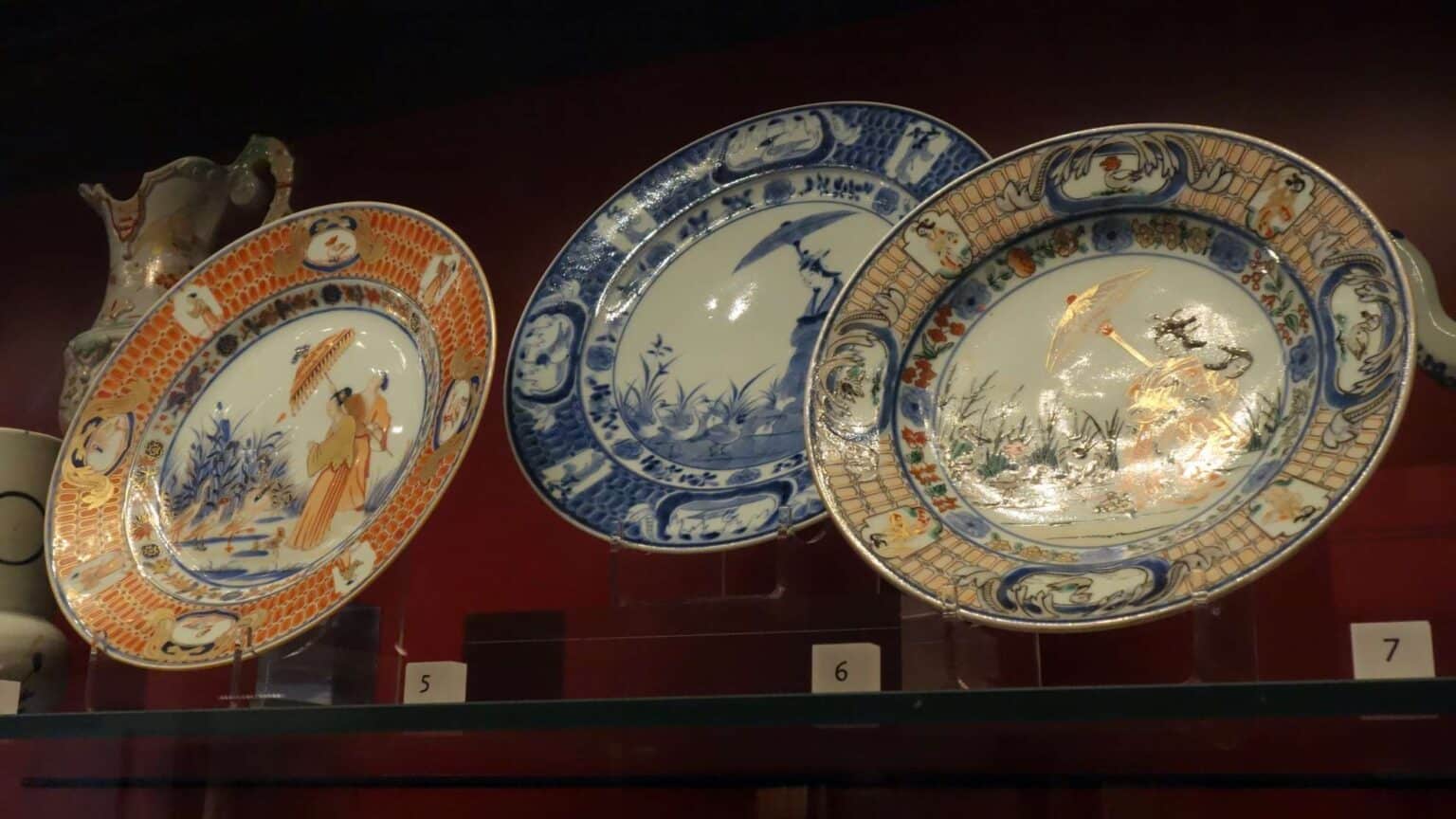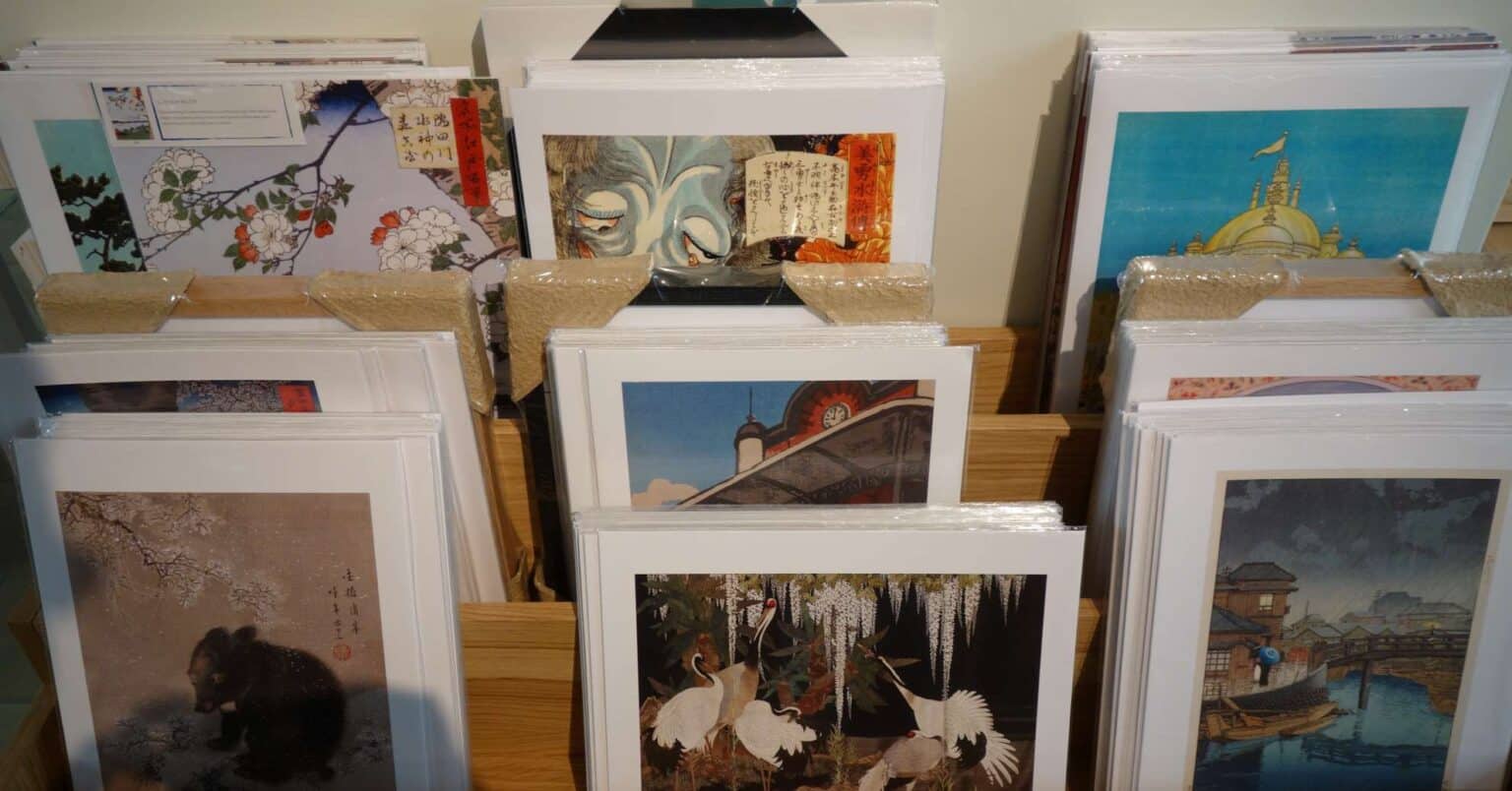
Quick selection
Far from home
Picture this; it’s the early 1800’s, and as a Japanese artisan you’ve just put the finishing touches to a beautifully painted dish depicting exquisite scenes of your homeland. It will most likely be enjoyed by a local noble or such where it will forever stay. Fast forward 200 years and you can now find it resting on display at the Ashmolean museum Oxford where thousands of people appreciate the time and skill that you once put into such an endeavour.
In fact, this is just one of the many items and stories that can be found at the Ashmolean in oxford, as its a site that houses a fairly impressive collection of Japanese artistry (among many other pieces from across the world). This is a museum of art and archeology after all and may be worth a visit if a bit of Japanese creativity takes your fancy.
All things design
The Japanese collection at the Ashmolean has a focus on art and design, mostly from the late Edo period (1800’s) onwards. This is a period where peace has prevailed in Japan for over 200 years and is on the verge of ending its isolation to the rest of the world. As such, creative expression was perhaps the highest point in Japan than it had been at any other time previously.
Ceramics such as painted plates, vases’ and ornamental pieces are plentiful, the bulk of which is contained within two rooms of the museum (36 -37) dedicated entirely to Japanese ornamental art, often around this time period. However, throughout other areas there are other artefacts of Japanese artistry on show. Some highlighting relations between Japan and other nations.
For example, there are some pieces on display that were trade gifts between the Netherlands and Japan who traded together (on occasion) in the 1600’s and 1700’s.
In all cases it is the design, images, and decoration that adorn them — which are quite exquisite — that is celebrated here. As alluded to in my introduction, depictions of town life, women, events; whether fictional or historical, feature in a number of designs, but you will also find those that are purely ornately decorated (think elegant patterns and natural scenes) that were influenced by western movements upon the end of the country’s isolationist period.
A unique selection
I want to talk about some of the highlights you can expect to discover within the Japanese collection at the Ashmolean museum Oxford. As well as some of the types of items listed above, there are some uniquely Japanese treasures that are truly wondrous.
Bodhisattva Jizo
Standing tall in the first room of the Japanese collection is a statue of the Bodhisattva Jizo also known as Ksitigarbha. More widely known as Jizo in Japanese, this statue made from lacquered wood is a representation of many similar statues that are actually quite common in Japan. Bodhisattva Jizo is one of the most prominent buddhist figures in the country.
Folding screen
The folding screen is a one-off large bi-fold screen depicting five women viewing cherry blossoms. The style and colours are very reminiscent of those used in the Japanese Ukiyo-e printing process but in an overall more muted form.
Wall scrolls
There are a handful of Japanese wall scrolls in the collection all different in style and subject. In truth these are some of my favourite types of Japanese art with their greyscale and subtle colourings, their subjective meanings, and their unique form — the ones on display exemplify these traits.
Reconstructed tea house
Yes, the museum houses its very own small-scale tea house. While it’s not possible to enter, it contains all the qualities that you can expect to see from its real Japanese counterparts. That’s because this tea house was designed and built by expert Japanese architects and craftsmen specifically for the space inside the Ashmolean.
Netsuke collection
For those unfamiliar with netsuke, they are ornamental fasteners used to secure personal effects whilst wearing a Kimono. At the far end of the Japanese collection, a wide variety of finely detailed examples are on display. Some are more traditionally rounded with inlaid designs while some are three dimensional mini sculptures in their own right.
Samurai armour and sword collection
The icing on this Japanese enthused cake, for many, will be the chance to discover a full set of ceremonial samurai armour. This pristinely preserved set has all the bells and whistles and is finely detailed and expertly made. The majority of the armour belongs to a similar era to much of the rest of the collection — that being the Edo period — built the helmet is perhaps one of the oldest items dating back to 1560.
Next to the amour is a set of two samurai swords and sheaths. Displaying both the razor fine edge of expertly forged steel as well the fine detail of its holder, showcases the quality of each of their parts. These together with the armour completes the full samurai loadout in one single location.
You might also be interested in:
Something to take home
Now it may be a bit unusual, but we have to discuss the gift shop. No day out is complete without a trip to one and for all us Japanese enthusiasts out there you’ll find a surprising selection of Japanese themed products to tempt you into taking something home.
You can find books and notepads, lucky charms, and even clothing like ties and kimonos. However there is one type of thing that is more abundant than everything else; that being an affinity to Japanese Ukiyo-e.
Ukiyo-e being art created by using a woodblock printing process appears in all forms in the shop, despite only showcasing a couple of prints in the museum collection itself. Postcards sets, greetings cards and replica prints can be found in all manner of designs and styles. On a similar note, most other things available are decorated with Hokusai’s ‘Great wave off of Kagawa’. As someone with an enthusiasm for Ukiyo-e prints it was quite a pleasant surprise.
Conclusion
The Japanese collection at the Ashmolean museum Oxford is unique in its emphasis on artistry and design. The variety in its collection makes for a full experience with examples of Japanese creativity in various forms and mediums. This ultimately means you’ll most likely be drawn to at least one type of exhibit that resonates with you personally.
It’s worth noting that contrary to other exhibits and collections, there are few items that could be described as historically significant. However, instead, culturally significant may be the right term.
Nathan






Leave a Comment